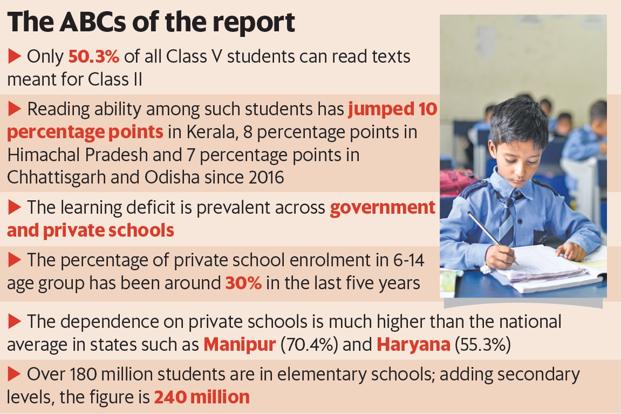900 319 0030
enquiry@shankarias.in
Why in news?
Annual Status of Education Report 2018, released recently, finds some improvements in primary education.
What is the background?
What does the latest report reveal?

What are the concerns?
Why is learning level in schools important?
Source: Business Standard